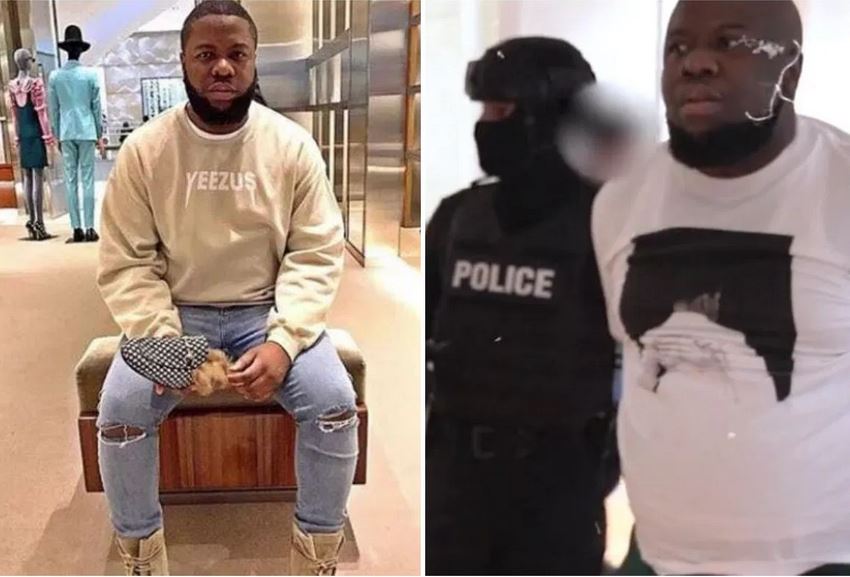
USA & CANADA (901)
Latest News
US to deport foreign students whose courses go fully online
Wednesday, 08 July 2020 04:33 Written by cableForeign students running degrees in the United States may have to leave the country or get deported if universities transition to an online-only form of teaching.
The US Immigration and Customs Enforcement (ICE) said this in a press statement on Monday while addressing forthcoming policies to be adopted for the fall semester to curb COVID-19 spread.
It said students under certain visas may not take a full online course load and remain in the US, noting that visas won’t be issued to students enrolled in fully virtual programmes for the fall semester starting in August.
Although those combining online and in-person lectures were exempted, the ICE suggested those enrolled online consider other measures like transferring to schools with in-person instruction.
“Nonimmigrant F-1 and M-1 students attending schools operating entirely online may not take a full online course load and remain in the United States,” the ICE explained.
“The U.S. Department of State will not issue visas to students enrolled in schools and/or programs that are fully online for the fall semester nor will the U.S.
“Customs and Border Protection permit these students to enter the United States.
“Active students currently enrolled in such programs must depart the country or take other measures, such as transferring to a school with in-person instruction to remain in lawful status.
“If not, they may face immigration consequences including, but not limited to, the initiation of removal proceedings.”
As the novel virus continues to spread globally, US varsities and many others across the globe had begun making arrangements to transition to online courses in place of in-person lecture delivery.
At Harvard, it is expected that all course instructions will soon go online, including for students living on campus and this opens the door to having international students leave the US.
Woodbery Defrauded US Firm Of $15.3m Stashed Away In Bitcoin Wallet — FBI
Tuesday, 07 July 2020 12:01 Written by tori 
Woodberry
The Federal Bureau of Investigations has said that $15.3million, which is part of the money Woodberry stole was stashed away in a Bitcoin wallet.
A case has been filed against Olalekan Jacob Ponle aka Woodberry by the Federal Bureau of Investigations, FBI, alleging that he defrauded some US firms of millions.
Police authorities had earlier shared footage of how Hushpuppi and his 11 cronies were busted in a special operation over cyber-fraud involving 1.9 million victims to the tune of N168 billion.
Arrested on June 10, the suspects were said to have been involved in crimes spanning money laundering, hacking, impersonation, scamming, banking fraud, and identity theft.
Alongside Hushpuppi, Ponle, who is better known as Woodbery, had been expelled from the UAE to the US where he is to face charges of conspiracy to commit fraud, one for which he risks 20 years jail term.
In an affidavit filed on Woodbery’s case, the FBI said that part of the sum from the scams, which he pulled between January and September 2019, had been stashed away in a Bitcoin, BTC, wallet.
Bitcoin is a type of virtual currency not issued by any government, bank, or firm but is generated and controlled through computer software operating on a decentralised peer-to-peer network.
While BTC transactions are recorded in the Bitcoin blockchain, the identities of the individuals or entities are not recorded on the public ledger, making the platform partially anonymous.
FBI said Woodbery staged business email compromise, BEC, schemes targeting accounts through computer intrusion techniques to cause the unauthorised transfer of funds from victim companies.
Among these are schemes that caused a Chicago-based company to lose $2,300,000 while another firm was defrauded into transferring a total of $15,268,000, part of which was stashed away in BTC wallet.
The affidavit read: “Preliminary blockchain analysis indicates that Ponle received at least 1,494.71506296 bitcoin related to these BEC schemes, valued at approximately $6,599,499.98.
“These schemes resulted in attempted and actual losses to victim companies in the tens of millions. Ponle directed money mules in the US to open bank accounts in the names of victim companies.
“Proceeds from BEC schemes, ranging from hundreds of thousands of dollars to millions of dollars, were then wired by unwitting employees to the bank accounts opened by Ponle’s mules.
“Ponle then instructed the mules to convert the proceeds to Bitcoin and to send the proceeds of the BEC schemes to a bitcoin wallet that he owned and operated.”
Woodbery is expected to appear in court on July 9, for hearing on his detention.
As U.S. buys up remdesivir, ‘vaccine nationalism’ threatens access to COVID-19 treatments
Monday, 06 July 2020 14:11 Written by theconversation 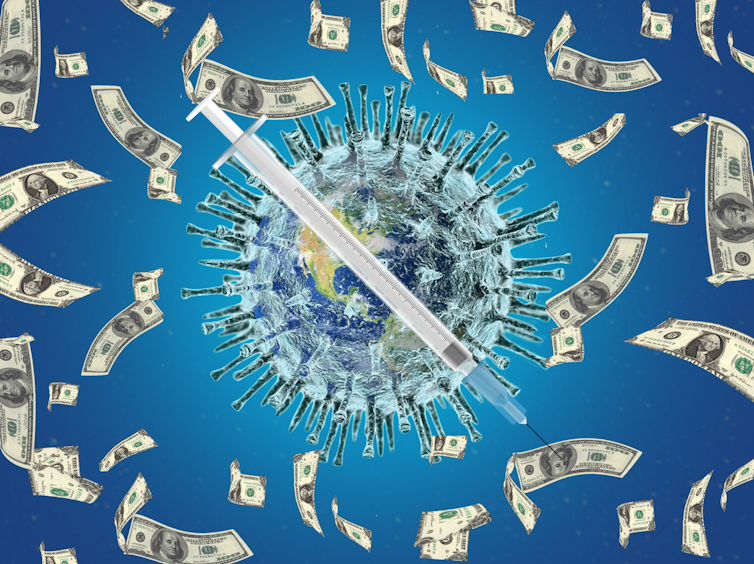
Joel Lexchin, University of Toronto
At the end of June, the United States government announced that it had secured the entire supply of remdesivir, an antiviral drug that shortens hospital stays for COVID-19 patients, until September.
In March, there were reports that Donald Trump’s administration tried to buy a German company working on a COVID-19 vaccine in order to secure the entire supply for the U.S. A group formed by France, Germany, Italy and the Netherlands struck a deal in the past few weeks to secure 400 million doses of AstraZeneca’s potential vaccine, although other countries are also encouraged to join the group on the same terms. Whether poor countries could afford the terms is another question.
It certainly doesn’t seem that “we’re all in this together” — it’s looking more and more like a dog-eat-dog world. The group that’s most likely to be eaten are those living in low- and middle-income countries (LMICs). Gilead, the maker of remdesivir, has licence agreements with manufacturers to supply remdesivir in 127 LMICs, but those agreements exclude large middle-income countries such as Brazil, China and Mexico.
Vaccine nationalism
Gavi, the Vaccine Alliance is creating a facility that will enter into advance purchase agreements with pharmaceutical companies guaranteeing the purchase of any eventual vaccines. But this proposal has generated significant global concerns about its impact on equitable access for populations, especially in developing countries. Under the agreement, rich countries will get the first crack at enough vaccine to cover 20 per cent of their population, and only then will poorer countries be guaranteed the vaccine — and only for their highest priority populations.
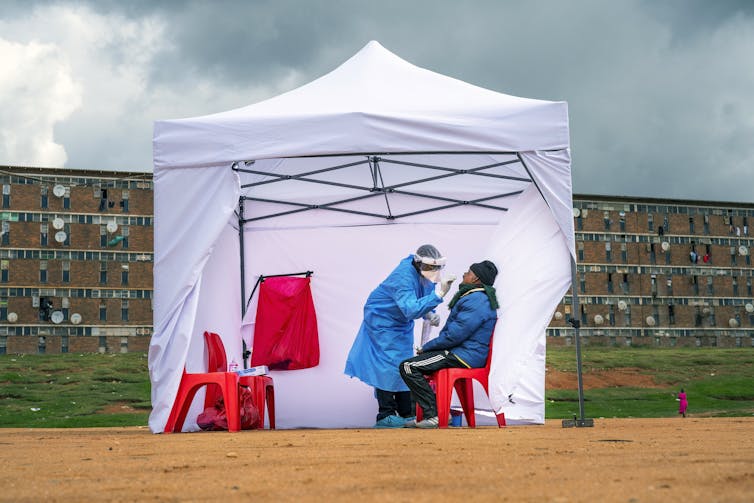
The Serum Institute of India has entered a licensing agreement with AstraZeneca to acquire one billion doses of AstraZeneca’s potential COVID-19 vaccine for LMICs, with a commitment to provide 400 million doses before the end of 2020. But the terms and conditions of the agreement are unknown, including the price and the number of countries eligible for supply.
South Africa has started a trial of the vaccine being developed by the University of Oxford in partnership with AstraZeneca to try to avoid being left behind in the race to secure a supply. Helen Rees, chairwoman of the South African Health Products Regulatory Authority, said in a briefing: “That debate about vaccine nationalism now is very critical…There has to be an equitable distribution of vaccines. It cannot be all for some and none for many others.”
Costs, supply and control
The cost of remdesivir in the U.S. is going to be US$390 per vial, which would amount to US$2,340 per five-day treatment course. It’s estimated that remdesivir could be made for under US$1 a dose, less than a quarter of one per cent of what Gilead will be charging. At Gilead’s price, the company could earn well over US$2 billion in the first year the drug is on sale. The cost will hopefully be much lower in countries that are the recipients of Gilead’s licences, but what about the excluded countries? At this point, no one knows. That includes Canada.
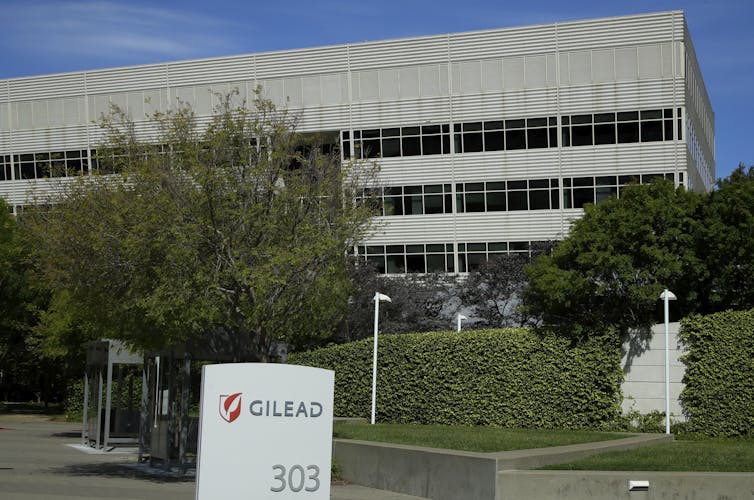
Gilead is in the process of submitting an application for approval of remdesivir to Health Canada and, according to Health Canada, the review will be conducted under expedited timelines due to the seriousness of COVID-19. Of course, under the new deal between the U.S. and Gilead, there won’t be any remdesivir for Canada to buy until the end of September. Canada could issue a compulsory licence to allow generic companies to make remdesivir, but currently that authority expires at the end of September so we may be stuck with Gilead as the only supplier.
Read more: Canada's coronavirus aid package guards against drug shortages with compulsory licensing
Gilead controls the supply of remdesivir because it holds the patent on the drug. When Jonas Salk, the inventor of the polio vaccine, was asked if he was going to patent it, his famous response was: “There is no patent, could you patent the sun?” In other words, the vaccine was a public good meant to be used by everyone.
Gilead obviously doesn’t hold the same view about remdesivir, despite the fact that U.S. taxpayers contributed at least $70.5 million to developing the drug.
Canada’s role
What should Canada be doing about all of this? How is the federal government going to ensure that Canadians have access to COVID-19 treatments and vaccines?
Right now, we don’t have the capability to manufacture a vaccine in the country. Connaught Laboratories, which was instrumental in helping to develop the polio vaccine, used to be able to make vaccines, but it was sold off by the federal government back in 1989 to a French firm.

The federal government should be looking at setting up a Crown corporation to ensure a domestic supply of critical drugs and vaccines at reasonable prices. Until that can be done, the government should extend the compulsory licensing provision in its emergency legislation so that generic companies can be allowed to make future patented therapies at lower costs.
But Canada needs to do much more. When Prime Minister Justin Trudeau was first elected back in 2015, he proclaimed that “Canada is back” in international relations. Despite this promise, Canada has yet to commit to ensuring that any COVID-19 research that is done with Canadian money has to guarantee that products will be available at affordable prices in low- and middle-income countries.
Canada has not signed on to the recently established COVID-19 technology access pool being sponsored by the World Health Organization that is designed to help ensure that COVID-19 health technology-related knowledge, intellectual property and data is voluntarily shared.
Canada is not back; it’s missing in action both domestically and internationally.
Joel Lexchin, Professor Emeritus of Health Policy and Management, York University, Emergency Physician at University Health Network, Associate Professor of Family and Community Medicine, University of Toronto
This article is republished from The Conversation under a Creative Commons license. Read the original article.
Revealed! Hushpuppi Faces 20 Years In US Prison Over N168 Billion Frauds
Saturday, 04 July 2020 09:13 Written by toriPopular News
Hot and cold zones: Life and death in a Montréal COVID-19 hospital
Monday, 29 June 2020 01:54 Written by theconversation 
Hillary Kaell, Concordia University
Julian Menezes dons a gown, gloves and face shield and steps into a patient’s room. Then he sits. His job is, simply, to be there — to accompany the sick.
The Royal Victoria Hospital (RVH), where Julian works, has treated over 300 confirmed COVID-19 cases since March. It is one of the busiest designated COVID-19 centres in Montréal, the city weathering by far the most cases in Canada. In all of this, Julian has a key role to play. He is the only spiritual care worker in the hospital’s “hot” zone, where patients with COVID-19 are treated.

Spiritual care workers — also called chaplains — offer emotional and spiritual support to people of any religion or none. Although more than 10,000 spiritual care workers serve institutions across North America, their role often becomes visible to the media only during crises. In the first coronavirus surge, media outlets from the New York Times to ABC News covered their work. Stories focused on the panic and sorrow of those first weeks, especially for hospital patients in isolation and their families, for whom chaplains now had to act as “proxies” or “surrogates.”
Barriers
As the pandemic wears on, the persistent theme of physical barriers, masks and social distancing has become mundane. This reconfiguring of bodies and space is especially evident in hospitals like the RVH.
Julian, who co-authored this article, recalls the anticipation before the first COVID-19 cases arrived. Hospital staff were unnerved as they tensely waited. Would it be a quick surge? What would caring for COVID-19 patients entail?
The hospital organized “hot zones” in a hurry. Staff had to reorient how they mapped and moved through the space. At the RVH, for example, the internal medicine and surgery wards were transformed into COVID-19 floors, and quickly repopulated with patients from Québec’s seniors’ homes.
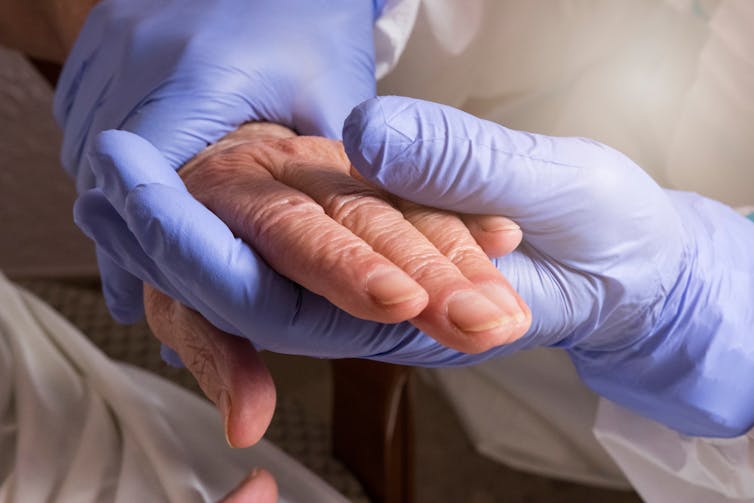
Following early directives to limit exposure, only staff performing life-saving care were in contact with COVID-19 patients. However, within days of the first cases arriving on March 12, it became clear that patients needed allied health workers, including those providing spiritual care.
Unlike some other hospitals in Montréal, the RVH had kept its four-person spiritual care team on site. At first, the small team covered COVID-19 floors, but avoided entering infected patients’ rooms — known as hot rooms. Then, on May 4, the hospital heightened the barriers between hot and cold zones: the team had to choose one or the other. After some deliberation, it was decided: Julian would cover the hot zone, while his colleagues worked the cold.
Cold and hot
Cold zones brought some of the first surprises. COVID-19 patients and their families expected that visitors would not be able to enter the hot zone. But patients in cold zones, admitted to the hospital for other health reasons, were shocked to learn they would also be cut off from their loved ones. On March 16, the hospital visiting policy had changed. Adult patients were now denied visitors, unless they were dying.
Erecting barriers to limit viral exposure came at a huge emotional cost. As chaplains in hard-hit areas of the United States have noted, the already pervasive fear of dying alone has intensified during the pandemic.
In the hot zones, some patients, especially elderly ones, are too infirm to interact. Others welcome Julian’s visits. That’s when there are other barriers to consider, since he dons protective equipment every time he enters a room. Faces are obfuscated and touch interrupted.
“Those interactions,” Julian explains, “help us mitigate our exposure to pain, suffering and death.… There is a barrier now so I’m not able to be with that person during this moment in the same way.” Being in the hot zone, Julian has become more aware that permeable boundaries — literal and emotional — are what make it possible to accompany people through such experiences. It is much more taxing to be near, observing, but unable to touch or be touched.
Supporting staff
Most media coverage has focused on chaplains’ work with patients and their families, but as the pandemic continued, their support for hospital staff has been vital too. In the days before RVH’s first COVID-19 patients arrived, staff worried most about possibly transmitting the virus to their families. Now other challenges have become apparent.
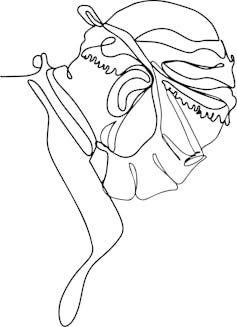
In the hot zone, nurses who had previously been on surgical wards with a handful of deaths a year, see several patients die each day. They tell Julian they feel powerless, and not only because there is no treatment for COVID-19. Like Julian, they are unable to provide the type of care that nourishes them; they cannot really get to know patients from behind their protective gear or provide reassurance through their touch.
Normally, doctors and nurses rarely stay with patients as they die. That has also changed, now that families are no longer at bedsides. Recently, Julian was present while an ICU nurse held the phone to a patient’s ear so his wife and young children could say goodbye from the hallway outside his room. His wife then asked the nurse to caress his head, in their familiar way, as he died. When it was over, the nurse came out to sit with Julian and the grieving widow. She had participated in ways that, she later confided to Julian, were beyond what she could imagine. There was no curtain to draw or door to close, no barrier to shield her from the grief.
“Being present at a death and witnessing something very intimate is familiar” to chaplains, says Julian. Now his job, in part, is to help other hospital staff acknowledge — and try to accept — what they are being exposed to emotionally.
Exposure
As COVID-19-related hospitalizations trend downwards, we are entering a new phase in the pandemic. Though hospital staff, including its spiritual care team, brace for a possible second surge, for a moment there is some breathing room. And with it, comes space to reflect.
From the hot zone at the heart of Canada’s COVID-19 outbreak, Julian says, “It makes you question, what is it like to live? To die? Is death the worst outcome? Everyone is exposed to these questions in a general way in the hospital. These are people who decided to work with people no one else wants to see. The ill and dying are, in a sense, quarantined already and kept away.”
But even within the hospital, Julian notes, many workers find ways to escape seeing death. “There is this weird juxtaposition in the hot zone where we are all gowned in hazmat suits and protected, and at the same time exposed much more than before to that level of intimacy, of grief.”
That is perhaps the point of entry, the question that guides further reflection: to what has this virus exposed us?
Julian Menezes of McGill University Health Centre co-authored this article. He is a spiritual care professional.![]()
Hillary Kaell, Associate Professor of Religion, Concordia University
This article is republished from The Conversation under a Creative Commons license. Read the original article.
How to build a better Canada after COVID-19: Transform CERB into a basic annual income program
Monday, 29 June 2020 01:48 Written by theconversation 
Gregory C Mason, University of Manitoba
This story is part of a series that proposes solutions to the many issues exposed during the coronavirus pandemic and what government and citizens can do to make Canada a better place.
COVID-19 has prompted the federal government to support individuals through the Canada Economic Emergency Benefit (CERB). Simultaneously, advocacy for a basic annual income has exploded, with some suggesting the CERB could evolve into a basic income.
Basic income has become the Swiss Army knife of social policy. Beyond offering sufficient income to manage the daily expenses of living, advocates believe it will improve health and psychological outcomes, enhance distributive justice, mitigate the employment effects of automation, spur gender equality, create true freedom, improve the esthetics of existence and transform the relationship between people and work.
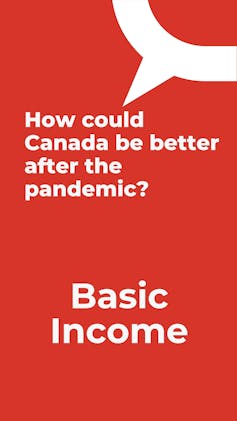
I suggest a basic income program is necessary, but not sufficient, for a complete economic safety net.
My observations are based in part on the lessons from Canada’s two basic income experiments: the Manitoba Basic Annual Income Experiment (Mincome), which was conducted from 1974 to 1979, and the Ontario Basic Income Pilot (OBIP), a short-lived experiment by the former Ontario government of Kathleen Wynne that ended in 2018. I have been working with Mincome data since 1981 and also served as a technical adviser to OBIP.
Use of a negative income tax
As with Mincome and OBIP, most proposals for a basic annual income rest on a negative income tax. While an income tax requires people to pay money to the government, a negative income tax uses an individual’s most recent tax return to verify eligibility for the basic income and to calculate the monthly payment which is distributed to recipients by direct deposit. OBIP required applicants to file a tax return and have a bank account, so these are not unusual requirements for participants in a basic income program.
A negative income tax would offer a guaranteed payment for those whose income is below a certain level. For every dollar earned above this guaranteed amount, the basic income payment falls by a percentage until earnings reach a level sufficient to eliminate any payments.
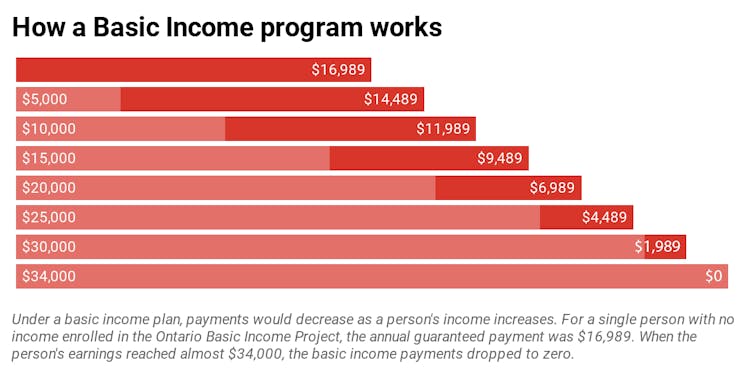
In Canada we already have a basic income for families with children in the form of the Canada Child Benefit (CCB). If we use the OBIP model, a single parent with no income and two children under 18 could expect to receive around $27,000 from the basic income plus CCB (as well as a GST credit). A basic income would not need to provide for children, but it may create different support levels for couples and those with disabilities.
Must be a federal program
Using the CCB as a guide, a first principle is that any basic income in Canada must be a federal program administered through the income tax system. The amount paid to each Canadian would be the same anywhere in Canada. To compensate for regional variations in costs, provinces could elect to create supplementary payments administered by the federal government, as they currently do with the CCB.
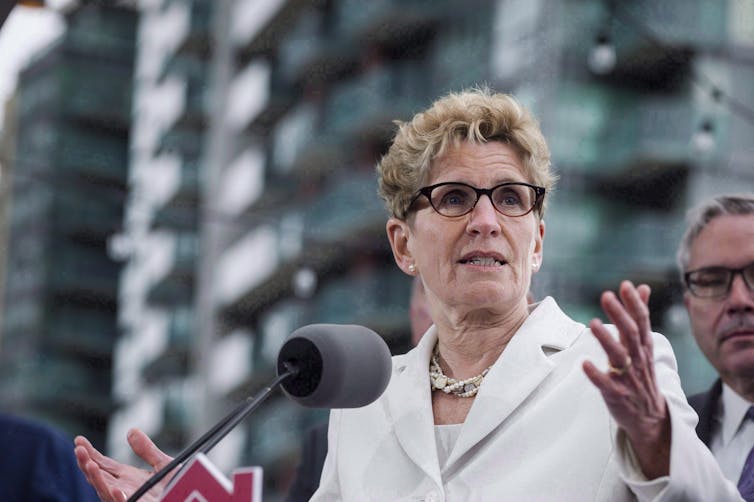
If provincial social assistance programs treat the basic income as earnings, social assistance payments would fall to a low level, effectively offsetting much of the cost of a basic income. Many provinces offer extras as part of their social assistance programs, such as supplementary health and rental assistance. A basic income would not eliminate these, but may affect the level of support depending on how individual provinces fine-tune their economic safety nets.
This all seems simple, but there are practical and political challenges.
First, many Canadians do not file income tax returns. Indigenous people who are registered under the Indian Act and earn income from First Nations-owned enterprises do not pay tax on that income. Social assistance recipients also do need not file. A basic income would therefore require government to expand its existing proactive effort to encourage low-income people to file tax returns.
Further, because income tax filings are annual, applicants whose income status changed during the year would need a way to qualify for a basic income between tax returns. The same online eligibility affidavit used by CERB is a solution for this problem.
Impact on the incentive to work?
We also don’t know how a basic income would affect a person’s incentive to find work, which is shocking considering the many millions of dollars consumed by studies since the mid-1970s to settle this very question. The problem is participants in all the studies knew the payments would end in a couple of years and did not disconnect from employment.
This uncertainty over how people will change their willingness to work when the basic income becomes permanent argues for starting with quite low payments — certainly lower than the CERB — and adjusting slowly as we “learn by doing.”
There’s another issue to consider. COVID-19 has stopped the income of many who own homes, cars and financial assets. Do we pay the same basic income to someone with hundreds of thousands of dollars of net worth — common for many who have lost their jobs due to COVID — as we pay to a homeless person living under an overpass in a cardboard box?
I think not. Owning assets such as a house or car after reaching a threshold value should disqualify someone from the basic annual income.
Mincome was the only negative income tax experiment to adjust payments based on both income and net worth. In the ‘70s, social assistance programs commonly required applicants to liquidate their assets before applying for support. Nowadays, applicants may have a modest degree of wealth and still qualify for social assistance payments.
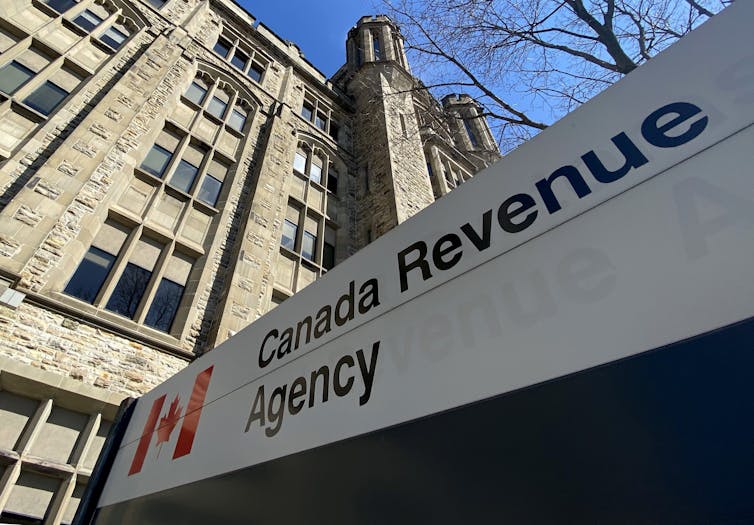
Most Canadians would agree that anyone with a certain level of net worth should draw this down before qualifying for the basic income. As an example, using the support levels for a single person used by OBIP, a possible threshold is $100,000 in net worth (equity in a home, cars, savings), above which someone would become ineligible for the basic income.
No need to liquidate assets
One need not sell the home in times of adversity because reverse annuity mortgages offer a method for accessing home equity to support the household.
The principle is clear — a basic income is the last line in the economic safety net.
Finally, aside from Canada Revenue Agency’s role in eligibility determination and payments administration, its scope of operations will increase through the need to track changes to net worth and to verify claims of a changed income between tax filings. Audits of recipients will also become more frequent to maintain the integrity of the program and to secure the political support of the majority of Canadians who are not receiving the basic income.
Compared to chasing scofflaws and the uber-rich, audits of poor people seems extreme, but recent concerns about the possible fraud in the CERB illustrates the need.
A basic income is possible for Canada. By creating a federal program as the backbone, with provinces offering top-ups and other poverty supports, developing the needed administrative processes and implementing the program over five years, we can get it done.
Gregory C Mason, Associate Professor of Economics, University of Manitoba
This article is republished from The Conversation under a Creative Commons license. Read the original article.
J. Alexander Keung, one of the ex-cops charged with George Floyd’s death confronted by angry shopper (video)
Tuesday, 23 June 2020 09:17 Written by lindaikejiblogJ Alexander Keung, one of the sacked police officers charged in connection with George Floyd’s death suffered a confrontation after being spotted grocery shopping at Cub Foods in Plymouth.
26-year-old Keung was released on Friday on 'bond and conditional release' from the Hennepin County Jail after posting a $750,000 bond. He is charged with second-degree murder without intent while committing a felony.

The angry shopper who was outraged that a man involved in such a "horrific death" is able to shop in peace, confronted Keung who was holding a pack of Oreos and a gallon of milk in his hands in the early hours on Sunday, June 21.
The lady was heard saying;
"You're not sorry! I don't think you should be out on bail.
"You don't have the right to be here.
"You killed somebody in cold blood, you do not have the right to be here. We want you to be locked up."

She went on to ask the ex Minneapolis officer if he felt "any remorse for what he did." He however had no comment.
Keung is expected back in court on June 29. He is one of the four officers charged in connection with the killing of Floyd, who died after officer Derek Chauvin knelt on his neck for more than eight minutes while other officers allegedly sat idly by.

It is alleged that Thomas Lane held Floyd’s legs and Kueng held his back while Chauvin placed his knee on Floyd’s head and neck. They did not relent even though Floyd repeatedly said “I can’t breathe, “Mama” and “please.”
At one point, Floyd said, “I’m about to die.” Chauvin, Lane, and Kueng didn’t move. A fourth officer, Tou Thao continued standing nearby keeping onlookers back. Lane is also free on bail, but Chauvin and Thao remain behind bars.
Trump rally in Tulsa, a day after Juneteenth, awakens memories of 1921 racist massacre
Monday, 22 June 2020 16:01 Written by theconversation 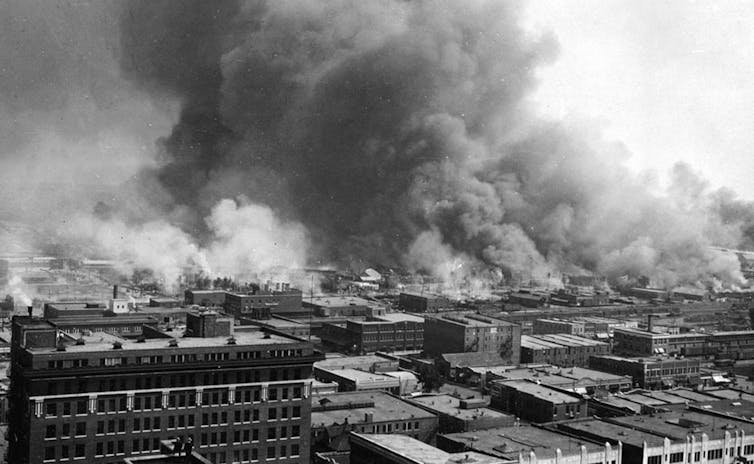
Russell Cobb, University of Alberta
For only the second time in a century, the world’s attention is focused on Tulsa, Okla. You would be forgiven for thinking Tulsa is a sleepy town “where the wind comes sweepin’ down the plain,” in the words of the musical Oklahoma!.
But Tulsa was the site of one of the worst episodes of racial violence in American history, and a long, arduous process of reconciliation over the Tulsa Race Massacre of 1921 was jarred by President Donald Trump’s decision to hold his first campaign rally there since the COVID-19 pandemic began.
The city is on edge. Emotions are raw. There’s anxiety about a spike in coronavirus cases, but lurking even deeper in the collective psyche is a fear that history could repeat itself. Tens of thousands of Trump supporters will gather close to a neighbourhood still reckoning with a white invasion that claimed hundreds of Black lives.
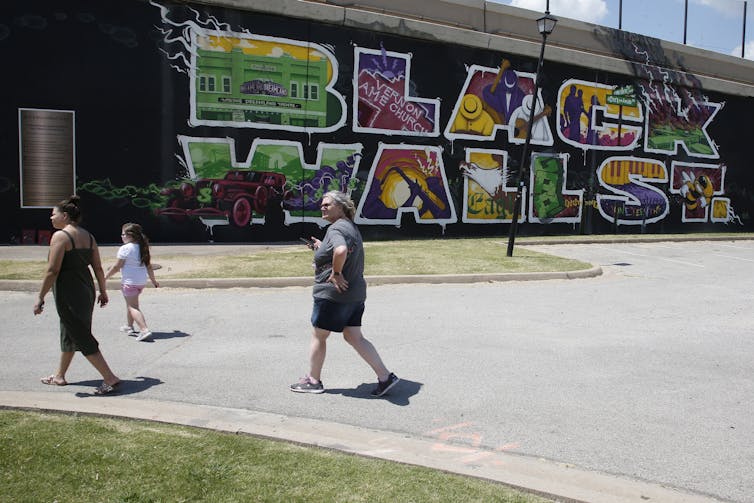
A Trump rally near a site of a race massacre during a global pandemic already sounded like a recipe for a dangerous social experiment. But then there was the matter of timing. The rally was to be held on Juneteenth (June 19), a holiday commemorating the day slaves in the western portion of the Confederacy finally gained their freedom.
Normally, Juneteenth in Tulsa is one big party, the rare event that brings white and Black Oklahomans together. But fears about spreading COVID-19 led organizers to cancel the event. Then came the protests over the murder of George Floyd. During those demonstrations in Tulsa, a truck ran through a blockade of traffic, causing one demonstrator to fall from a bridge. He is paralyzed from the waist down.
COVID-19 cases surging
To make a bad situation even worse, the city is witnessing a surge in coronavirus cases. Local health officials have acknowledged that the increase in new cases, mixed with close to 20,000 people packed into an arena, is “a perfect storm” that could fuel a super-spreader event.

Some of Mayor G.T. Bynum’s biggest supporters began pleading with him to cancel the event. Bynum is of that rarest of species, a Republican who has staked part of his political legacy on combating racism. It was Bynum who shocked the white establishment by ordering an investigation into potential mass grave sites from the 1921 massacre, even as many Republicans accused him of opening old wounds.
Faced with the prospect of provoking a fight with Trump, however, Bynum equivocated.
Bynum found himself under attack from former friends and allies who urged him to do something. Then, on June 13, the Trump campaign announced that it would change the date of the rally to June 20 “out of respect” for Juneteenth. It was a small victory for protesters, but some were further enraged by Bynum’s moral equivalence between the protests over Floyd’s murder and a Trump campaign rally.
Reminiscent of another mayor
The mayor’s impotence has also brought back memories of 1921. The mayor then, T.D. Evans, found himself unable — or unwilling — to stand between an angry white mob ginned up over fears of a “Black uprising” and a Black community demanding racial equality.
Evans saw the rising influence of the Ku Klux Klan in Oklahoma politics and quietly voiced his displeasure. As the Tulsa Tribune cultivated white paranoia about a Black invasion of white Tulsa, Evans, and many like him, did little. “Despite warnings from Blacks and whites that trouble was brewing,” Tulsa Word reporter Randy Krehbiel wrote in a book about the massacre, “(Evans) remained mostly silent.”
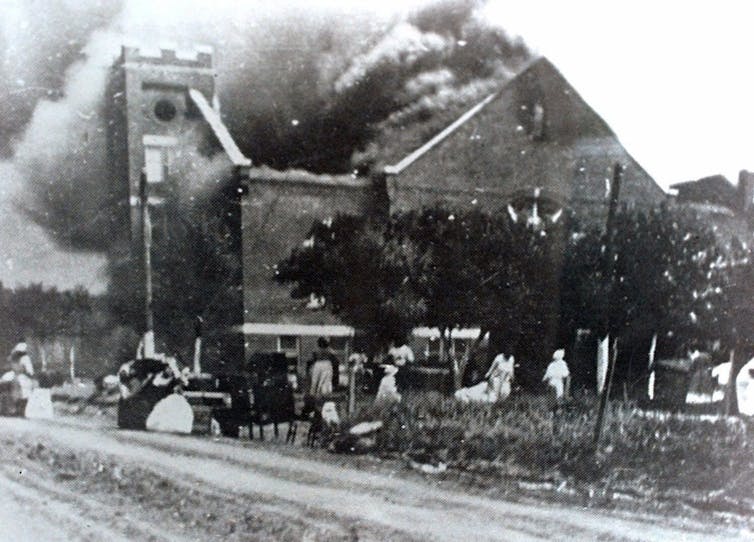
One historical parallel with 1921 stands out above the rest: the power and influence of “fake news” to mobilize alienated voters.
While much has been made of a revolution of social media and YouTube to undercut the gatekeepers of traditional media, a false news article was the most proximate cause of the Tulsa Race Massacre of 1921.
The Tulsa Tribune published an article on May 30, 1921, with an unproven allegation that a Black man, Dick Rowland, had tried to rape a white woman in a downtown elevator. The dog-whistle came through loud and clear. No evidence was presented and charges were later dropped. But the news was enough to set off calls for a lynching of Rowland.
Hundreds killed
A mob formed around the Tulsa courthouse. The Tribune had been stoking fears of a “Black uprising” for months, running stories of race mixing, jazz and interracial dancing at Black road houses.
A few Blacks armed themselves and tried to stop the lynching. The sight of armed Blacks made the white mob direct its fury at a bigger target — the Black section of town, Greenwood.
By the dawn of June 1, 1921, Greenwood lay in ruins, with hundreds dead and thousands interned in camps. The devastation did not come as a surprise to those who had watched the rise of xenophobia during the First World War and the second coming of the KKK, an organization that received a boost after the screening of the racist film The Birth of a Nation in 1915 at the White House.

Tulsa, and the nation, had been primed for racial violence by a white supremacist media and presidential administration. Many well-intentioned people stood idly by, hoping the trouble would soon blow over. It did not.
Karl Marx wrote that history repeats itself, the first time as tragedy, the second as farce. During the spring of 1921, Tulsa got the tragedy. With Trump rallying tens of thousands of his supporters near Greenwood amid a deadly pandemic, the best we can hope for this time around is farce.
Russell Cobb, Associate Professor of Latin American Studies, University of Alberta
This article is republished from The Conversation under a Creative Commons license. Read the original article.

